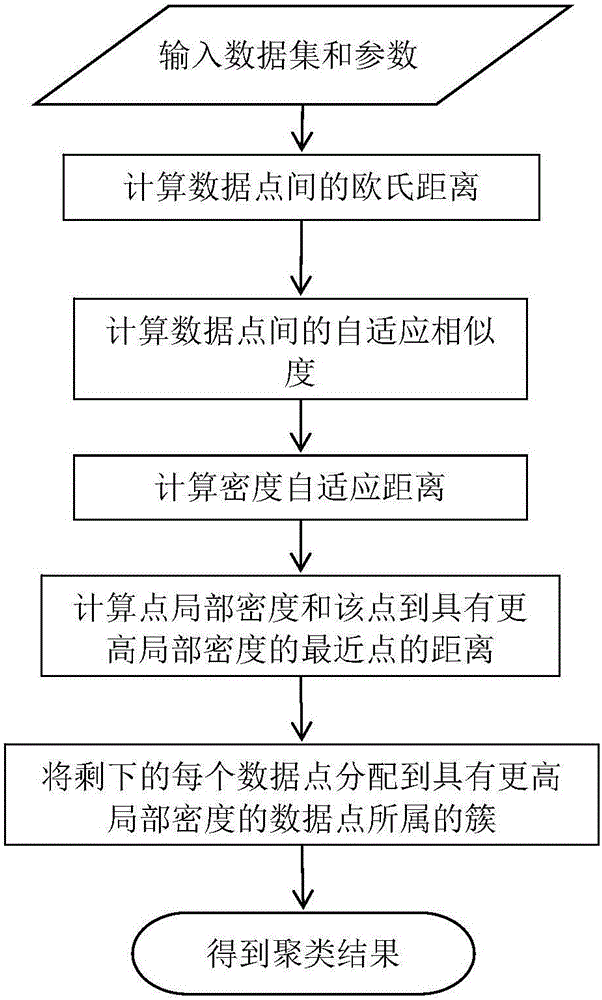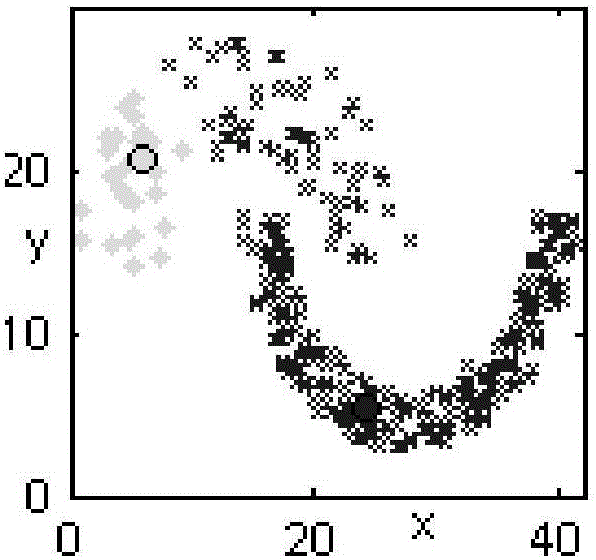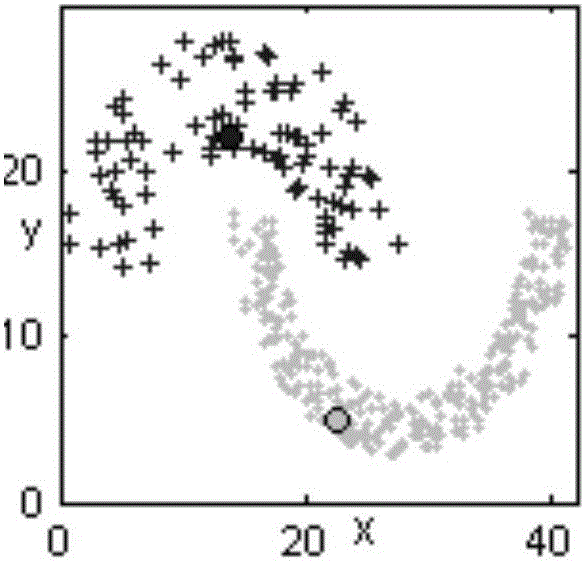Density peak clustering algorithm based on density adaptive distance
A density peak clustering and self-adaptive technology, applied in the field of cluster analysis, can solve the problems of large differences in density, inability to select, and cluster centers are easily selected by mistake, so as to achieve the effect of reducing and amplifying differences.
- Summary
- Abstract
- Description
- Claims
- Application Information
AI Technical Summary
Problems solved by technology
Method used
Image
Examples
Embodiment Construction
[0044] In order to clarify the purpose, technical solutions and advantages of the present invention, the present invention will be further described in detail below in conjunction with specific embodiments and accompanying drawings.
[0045] refer to figure 1 , the specific implementation process of the present invention comprises the following steps:
[0046] (1) Input data set X={x 1 ,x 2 ,...,x n}∈R D , the proportion value p of the total number of neighbor points of the data point to the total number of samples in the data set, and the distance adjustment factor α; where, n represents the number of samples, and D represents the dimension of the sample.
[0047] (2) First calculate the data point x i with x j The Euclidean distance between:
[0048] d ( x i , x j ) = Σ ...
PUM
 Login to View More
Login to View More Abstract
Description
Claims
Application Information
 Login to View More
Login to View More - R&D
- Intellectual Property
- Life Sciences
- Materials
- Tech Scout
- Unparalleled Data Quality
- Higher Quality Content
- 60% Fewer Hallucinations
Browse by: Latest US Patents, China's latest patents, Technical Efficacy Thesaurus, Application Domain, Technology Topic, Popular Technical Reports.
© 2025 PatSnap. All rights reserved.Legal|Privacy policy|Modern Slavery Act Transparency Statement|Sitemap|About US| Contact US: help@patsnap.com



